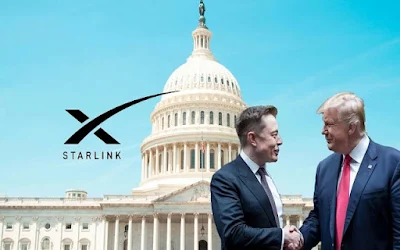Elon Musk makes the decision to equip the White House with Starlink.
By incorporating Starlink, the satellite internet service from SpaceX, Elon Musk's company, the White House, where Donald Trump has been living since taking office on January 20, has made an unexpected move in its communications infrastructure. Given Musk's connection to the Trump administration, this installation, which expands the government complex's current Wi-Fi network, begs the question of its intentions and ramifications.
The Starlink presence at the White House is officially justified by the need to improve internet access, though the precise date of the project's installation following Trump's second term is still unknown. It is reported that the current Wi-Fi infrastructure is overloaded and that certain parts of the building have poor cell phone coverage. According to sources close to the White House who spoke to The New York Times, the Starlink system will use existing fiber infrastructure to route through a remote data center rather than placing base stations directly in buildings.
This endeavor is not without controversy, though. Starlink and other businesses with regulatory interests or contracts with the federal government are under the control of Elon Musk, who is currently an unpaid advisor and "special government employee" to the White House. For a number of weeks, this circumstance has sparked concerns about possible conflicts of interest.
Former officials have voiced doubts about the viability of such donations and the need for more stringent oversight to guarantee the security of the systems, despite the Trump administration's insistence that the Starlink deployment was a "donation" and that right ethical procedures were followed. Experts in cybersecurity have cautioned that the launch of a new network, the encryption of which is still unknown, may provide the White House's communications infrastructure with yet another avenue for attack.

